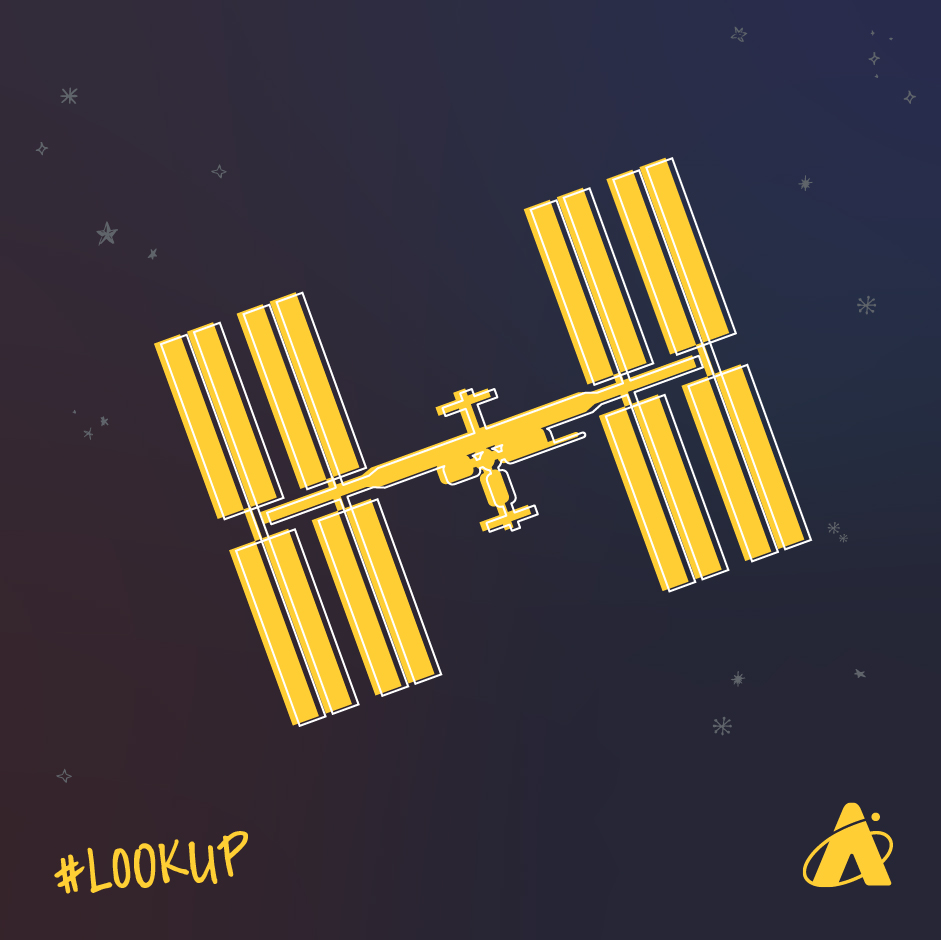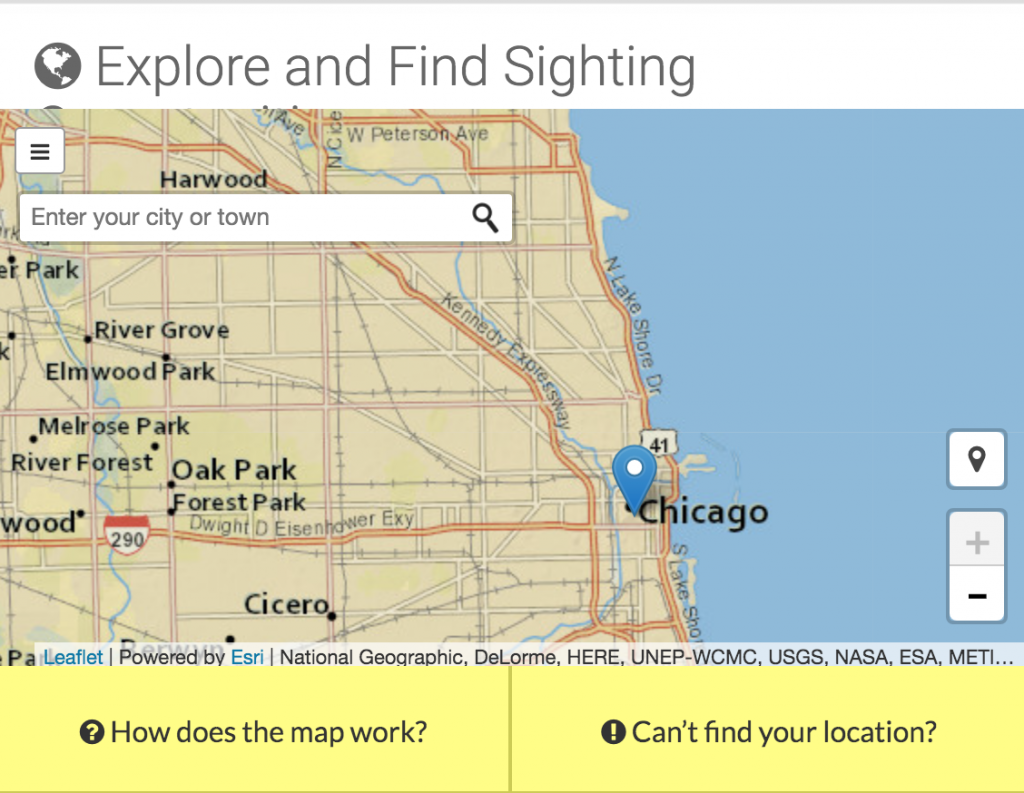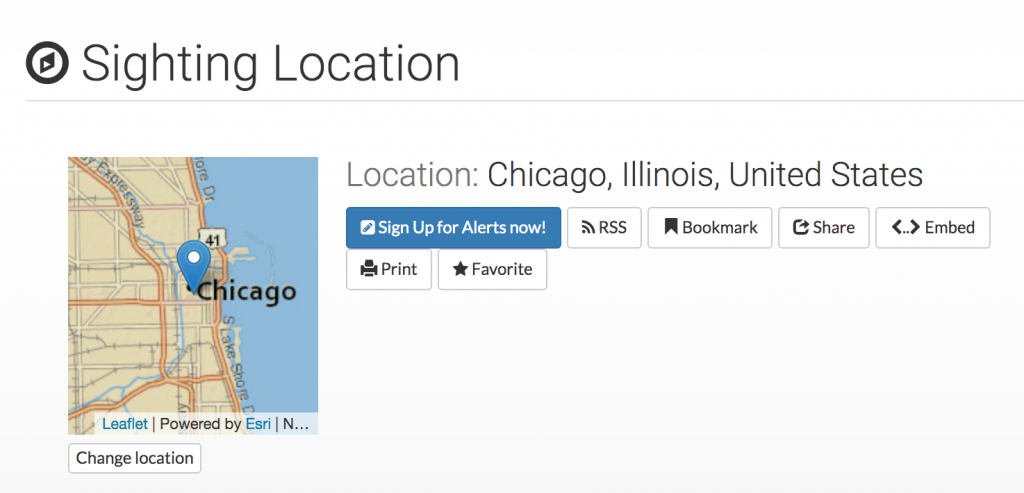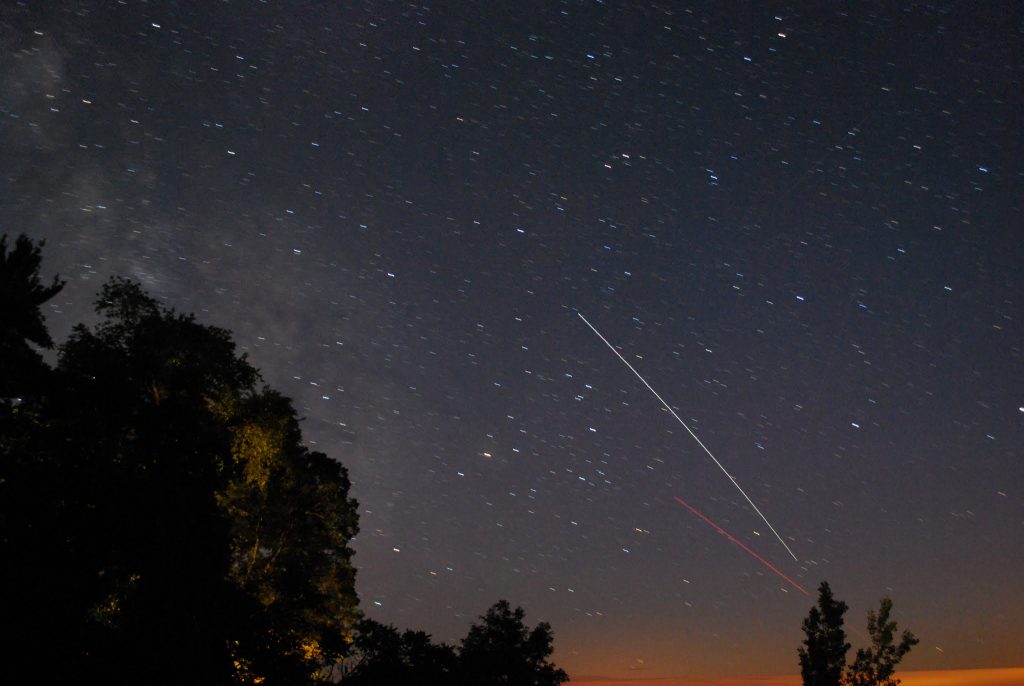How to Spot the International Space Station

Every summer, Michelle Larson, President and CEO of the Adler Planetarium, loves to attend a star party (or two!) with her family. Star parties are one of those scenarios where groups of people get together and camp out in a place where the night sky is highly visible. People bring tents, blankets, hot chocolate… and telescopes! There’s a big no lights rule at night so as not to obstruct telescope viewing. It can be so dark that you can’t even see the people camped out next to you—you’ll have to identify them by their voice the next morning!
What’s one of the best parts about looking up at the night sky with tens—or even hundreds—of other people shrouded in darkness? The chorus of stargazers… the first voice sounds, “ISS!” Second voice from across the camp, “ISS!” And suddenly a whole chorus of strangers, “ISS! Look now!” And everyone scrambles to find their nearest telescope, looking up at once, together.
So, You Want to Find the International Space Station?
Spotting the International Space Station, while not difficult as it is the third brightest object in the night sky, does require that you know when and where to look. Luckily, NASA has made it pretty easy to pinpoint the correct time and coordinates with Spot the Station, an online guide dedicated to spotting the ISS from any location!
To start, all you need to do is identify your location in the Explore and Find Sightings Opportunities map located on the homepage of the Spot the Station website. You can type your location in the search box at the top left or move the map around, zoom in/zoom out to find your area, and click on the little pin closest to your location.

Once you find your location, you’ll get the full list of sightings for your area for up to the next two weeks. (Or if you’re hoping to observe further into the future, you can set up email or mobile alerts.)

How to Find the International Space Station Using Spot the Station
In the listing of upcoming ISS sightings, you’ll see a few key pieces of information that will help you locate the ISS in your night sky using a telescope. You can see the key metrics below: Visible, Max Height, Appears, and Disappears.

But what do these pieces of information mean? Here’s a little key to help you on your way:
Visible: This metric refers to the length of time the ISS will be visible in the night sky before it disappears below the horizon line.
Max Height: Measured in degrees, or elevation, max height refers to the height the ISS will be from the horizon line.
Appears: Measured in degrees from the horizon, this metric refers to where the ISS will first be visible in the night sky. The letters represent compass directions. (In the example above, WSW stands for west by southwest.)
Disappears: Measured in degrees from the horizon, this metric refers to where the ISS will leave your field of view in the night sky. The letters represent compass directions. (In the example above, N stands for north.)
Now Go Out and Find the International Space Station!
Feeling confident yet? Don’t worry, you’ve got this!
As you look up, you’ll be looking for an object that appears like a fast-moving plane in the night sky. It will be a steady stream of white light, no blinking. And while you don’t always need a telescope to see the ISS, you can certainly use one! For information on how to do this, check out this FAQ from NASA!
Happy hunting! Make sure to wave to the astronauts on board!

Share your ISS sightings with us via social media by tagging @AdlerPlanet on Instagram and Twitter!
Learn From Our Astronomy Educators
Subscribe to our YouTube channel to learn all about space science and observing our night sky. Tour the night sky with the Adler Planetarium’s Theaters Manager Nick, who uses cutting edge visualizations, NASA images, and astrophotography to show you what you can see in the night sky throughout the year—including how to spot the International Space Station.






